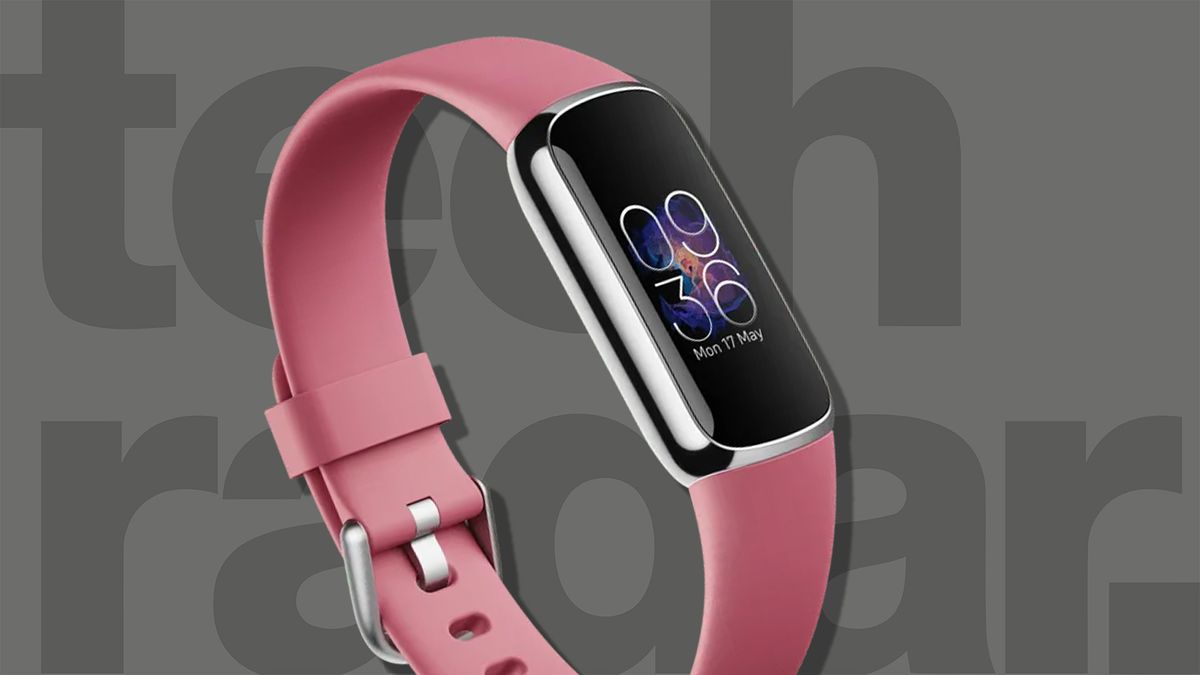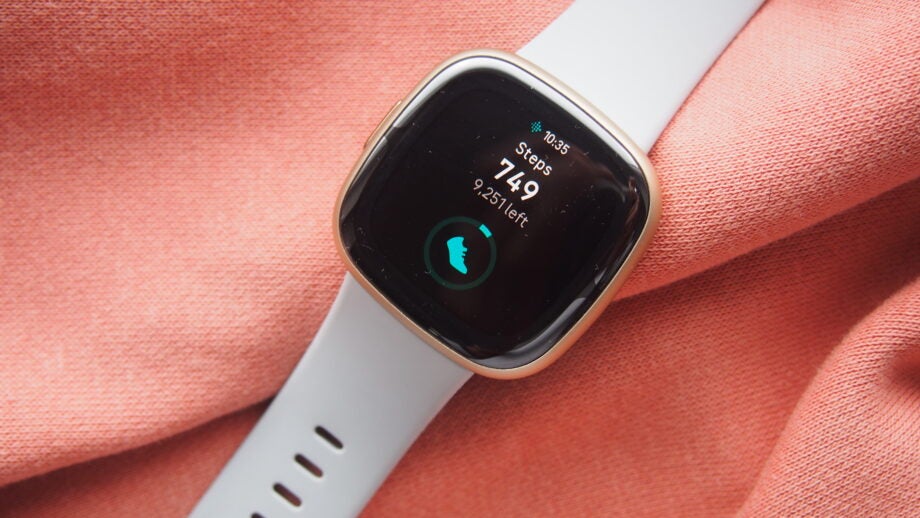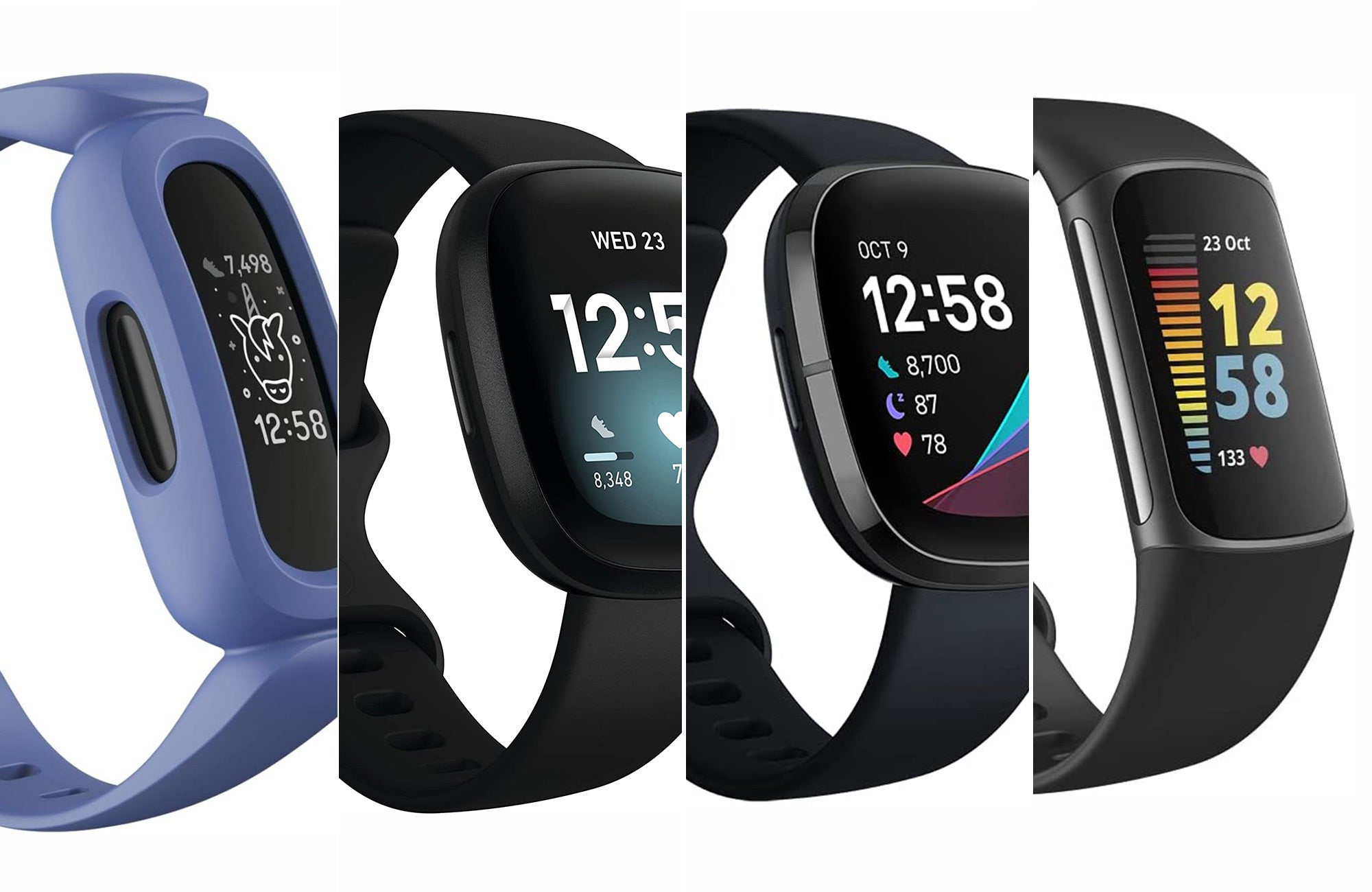Have you ever wondered where Fitbits are made? It’s no secret that these popular fitness trackers have become a staple in many people’s lives. From tracking your steps to monitoring your heart rate, Fitbits have revolutionized the way we approach our health and fitness goals. But have you ever stopped to think about where these devices are actually manufactured?
In 2023, Fitbits are predominantly made in China. The country has been a major manufacturing hub for electronics for many years, and Fitbit is no exception. China’s strong manufacturing capabilities and infrastructure make it an ideal location for the production of these devices. However, it’s important to note that Fitbit does have manufacturing facilities in other countries as well, such as Vietnam and Malaysia. These facilities help meet the high demand for Fitbit devices around the world.
In our upcoming article, we will delve deeper into the manufacturing process of Fitbits and explore the reasons behind their chosen production locations. We will also discuss the impact of manufacturing in different countries on the cost and quality of Fitbit devices. So, if you’re curious to learn more about where Fitbits are made and how it affects their overall production, stay tuned! There’s a lot more to discover.

Overview of Fitbit Manufacturing
Fitbit, the popular fitness wearable device company, has become a global leader in the industry since its establishment. The company’s manufacturing locations have evolved over the years to meet changing demands and market dynamics. In this article, we will explore the history of Fitbit, the evolution of its manufacturing processes, and its current manufacturing locations around the world in 2023.
History of Fitbit
Fitbit was founded in 2007 with the aim of developing wearable technology to help individuals track and monitor their fitness activities. The company quickly gained popularity and became known for its innovative products and user-friendly interfaces. Fitbit’s success can be attributed to its focus on developing devices that seamlessly integrate into users’ lives and provide valuable health insights.

Evolution of Fitbit Manufacturing
Fitbit initially relied heavily on outsourcing its manufacturing to external suppliers, primarily in Asian countries known for their manufacturing capabilities. Over time, the company realized the need for more control over the manufacturing process to ensure quality and efficiency. This led to the establishment of Fitbit-owned manufacturing facilities in strategic locations around the world.
Current Fitbit Manufacturing Locations
Fitbit now has manufacturing facilities in various regions, including Asia, the Americas, and Europe. These locations ensure that Fitbit devices are produced close to major markets, contributing to faster delivery times and reduced logistics costs. Let’s explore the manufacturing locations in each region.

Factors Influencing Fitbit Manufacturing Locations
Several factors play a significant role in determining Fitbit’s manufacturing locations. These factors include the cost of labor, supply chain efficiency, infrastructure and logistics, and government policies and regulations. By considering these aspects, Fitbit can optimize its manufacturing operations and ensure competitiveness in the market.
Cost of Labor
The cost of labor is a crucial consideration for any manufacturing company. Fitbit seeks to strike a balance between cost-efficiency and maintaining high-quality production standards. Manufacturing locations with a skilled workforce at competitive wages are preferred to minimize costs without compromising on quality.
Supply Chain Efficiency
Fitbit’s supply chain efficiency is a critical factor in its manufacturing operations. Proximity to suppliers, transportation networks, and distribution channels ensures that components and finished products can be efficiently moved throughout the supply chain. This helps reduce lead times and enhances overall operational efficiency.
Infrastructure and Logistics
Infrastructure and logistics play a vital role in maintaining smooth manufacturing operations. Fitbit looks for manufacturing locations with well-developed infrastructure, including transportation systems, utilities, and communication networks. These factors contribute to reduced downtime, increased productivity, and improved connectivity.
Government Policies and Regulations
Government policies and regulations can significantly impact manufacturing operations. Fitbit considers locations with favorable policies and regulations that support business operations, including tax incentives, intellectual property protection, and ease of doing business. Compliance with local regulations ensures smooth manufacturing processes and minimizes legal hurdles.
Fitbit Manufacturing Locations in Asia
Asia has been a prominent region for Fitbit’s manufacturing operations due to its well-established manufacturing capabilities and supply chain networks. In 2023, Fitbit has manufacturing facilities in the following Asian countries:
China
China continues to be a key manufacturing location for Fitbit. Its extensive manufacturing infrastructure, skilled labor force, and established supply chain networks make it an attractive choice. Fitbit’s manufacturing facilities in China produce a significant portion of the company’s total production.
Vietnam
Vietnam has emerged as a popular manufacturing hub in recent years due to its competitive labor costs and growing infrastructure. Fitbit has recognized the potential of Vietnam and has established manufacturing facilities in the country. These facilities contribute to Fitbit’s production capacity and enhance its supply chain resilience.
Taiwan
Taiwan, known for its technology expertise, hosts Fitbit’s manufacturing facilities for specific products. The country’s highly skilled workforce and advanced manufacturing capabilities allow Fitbit to produce specialized components and ensure high product quality.
South Korea
South Korea, renowned for its advanced technology sector, is another key manufacturing location for Fitbit. The country’s expertise in electronics manufacturing and research and development capabilities make it an ideal choice for Fitbit’s sophisticated wearable devices.

Fitbit Manufacturing Locations in the Americas
The Americas have also been significant for Fitbit’s manufacturing operations, ensuring proximity to key markets and reducing transportation costs and lead times. In 2023, Fitbit has manufacturing facilities in the following countries:
United States
Fitbit’s home country, the United States, remains a crucial manufacturing location. Fitbit’s domestic production facilities are strategically located to cater to the local market’s demands and ensure efficient distribution throughout the country.
Mexico
Mexico’s proximity to the United States and its well-developed manufacturing capabilities make it an attractive choice for Fitbit’s manufacturing operations. Fitbit’s manufacturing facilities in Mexico contribute to meeting the demand of the North American market.
Brazil
Fitbit has also expanded its presence in Brazil to tap into the growing South American market. Brazil’s improving infrastructure and favorable business environment make it a feasible choice for Fitbit’s manufacturing operations in the region.
Fitbit Manufacturing Locations in Europe
Europe is another important region for Fitbit’s manufacturing operations, catering to the demand of the European market. In 2023, Fitbit has manufacturing facilities in the following European countries:
Germany
Germany is widely recognized for its manufacturing excellence and technological advancements. Fitbit’s manufacturing facilities in Germany benefit from the country’s highly skilled workforce and robust infrastructure, ensuring high-quality production for the European market.
France
France, known for its innovation and quality standards, hosts Fitbit’s manufacturing facilities for specific product lines. Fitbit’s operations in France benefit from the country’s advanced manufacturing capabilities and adherence to strict quality control protocols.
United Kingdom
Fitbit’s manufacturing facilities in the United Kingdom serve the local market as well as nearby European countries. The United Kingdom’s well-developed logistics infrastructure and skilled labor force ensure efficient manufacturing and distribution operations.

Environmental Impact of Fitbit Manufacturing
Fitbit recognizes the importance of sustainable manufacturing and has implemented several initiatives to reduce its environmental footprint. These initiatives include:
Sustainability Initiatives
Fitbit has implemented sustainability initiatives throughout its manufacturing operations. These initiatives focus on reducing waste, conserving resources, and promoting responsible production practices. Fitbit continuously strives to improve its manufacturing processes to minimize its impact on the environment.
Carbon Footprint Reduction
Fitbit is committed to reducing its carbon footprint by implementing energy-efficient manufacturing processes and sourcing renewable energy for its manufacturing facilities. By minimizing energy consumption and utilizing clean energy sources, Fitbit aims to minimize its contribution to climate change.
Waste Management
Fitbit emphasizes effective waste management practices in its manufacturing operations. Implementing recycling programs, reducing packaging materials, and minimizing waste generation help Fitbit minimize its environmental impact. Fitbit also partners with recycling organizations to responsibly dispose of electronic waste.
Renewable Energy Usage
Fitbit actively invests in renewable energy sources to power its manufacturing facilities. This includes installing solar panels and utilizing wind energy, allowing Fitbit to reduce its reliance on fossil fuels and transition to cleaner sources of energy.
Fitbit Manufacturing in 2023
Looking ahead to 2023, Fitbit is likely to undertake significant shifts in its manufacturing locations to align with market demand. These shifts may involve opening new manufacturing facilities, relocating existing ones, or recalibrating production capacities to adapt to evolving market trends.
Shifts in Manufacturing Locations
As market dynamics change, Fitbit may reassess its manufacturing locations to optimize production and respond to shifts in consumer demand. This could involve expanding operations in emerging markets, shifting production closer to consumer hubs, or consolidating manufacturing facilities for cost-efficiency.
Technological Advancements in Manufacturing Processes
Fitbit will continue to leverage technological advancements to enhance its manufacturing processes. Innovations such as automation, robotics, and artificial intelligence (AI) will streamline production, improve efficiency, and reduce costs. Fitbit’s manufacturing facilities are expected to incorporate these technologies to remain competitive in the evolving wearable device market.
Projected Market Demand
Fitbit’s manufacturing strategy will be influenced by projected market demand. As consumer preferences and trends change, Fitbit will align its production capacities to meet the evolving demands of its target market. This could involve scaling up or downsizing manufacturing operations based on market forecasts.
Challenges and Opportunities in Fitbit Manufacturing
While Fitbit has enjoyed immense success in the wearable device industry, it faces several challenges and opportunities in its manufacturing operations.
Supply Chain Disruptions
Supply chain disruptions, such as natural disasters, political instability, or pandemics, can significantly impact Fitbit’s manufacturing operations. Fitbit must proactively manage these risks through robust supply chain management practices, diversification of suppliers, and contingency plans.
Rising Labor Costs
As economies develop and labor costs rise, Fitbit may face challenges in balancing cost-efficiency with maintaining high-quality manufacturing processes. Implementing efficient manufacturing practices, investing in automation, and exploring alternative manufacturing locations can help mitigate the impact of rising labor costs.
Competition from Other Wearable Device Manufacturers
The wearable device market is highly competitive, with numerous players vying for market share. Fitbit must continuously innovate and differentiate itself to stay ahead of the competition. This involves investing in research and development, improving manufacturing processes, and delivering high-quality products that meet consumer expectations.
Exploring New Markets
Fitbit has the opportunity to explore new markets and expand its manufacturing operations beyond its current geographical presence. By entering untapped markets, Fitbit can tap into new consumer segments and diversify its revenue streams. However, entering new markets requires careful market research, understanding local regulations, and adapting products to meet market-specific preferences.
Future Trends in Fitbit Manufacturing
The future of Fitbit manufacturing will be shaped by emerging trends in the industry. Here are some future trends to watch out for:
Automation and Robotics
Automation and robotics will play an increasingly significant role in Fitbit’s manufacturing operations. These technologies enable streamlined production processes, improved precision, and reduced labor requirements. Fitbit will continue to invest in automation and robotics to enhance manufacturing efficiency and reduce costs.
Miniaturization of Components
As wearables become smaller and more compact, Fitbit will focus on the miniaturization of components. This involves developing manufacturing processes capable of producing smaller and lightweight components without compromising on functionality or quality. Fitbit’s manufacturing facilities will integrate advanced technologies to achieve this goal.
Integration of AI and IoT
The integration of artificial intelligence (AI) and the Internet of Things (IoT) will revolutionize Fitbit’s manufacturing processes. AI-powered systems can optimize production planning, monitor quality control, and detect anomalies in real-time. IoT devices can provide valuable data for predictive maintenance, supply chain optimization, and personalized product development.
Enhanced Customization and Personalization
Fitbit recognizes the importance of personalized user experiences. Future manufacturing processes will focus on enhancing customization and personalization options, allowing users to tailor their Fitbit devices to their specific needs. Fitbit’s manufacturing capabilities will adapt to accommodate greater customization requirements, resulting in unique products for individual consumers.
Conclusion
In conclusion, Fitbit’s manufacturing landscape in 2023 is diverse and strategically positioned around the world. Fitbit has manufacturing facilities in Asia, the Americas, and Europe, ensuring proximity to major markets and leveraging regional expertise. The company remains committed to sustainability and has implemented various initiatives to reduce its environmental impact.
Fitbit’s manufacturing strategy will continue to evolve, driven by market demand, technological advancements, and a focus on innovation. Challenges such as supply chain disruptions, rising labor costs, and competition from other wearable device manufacturers present opportunities for growth and differentiation.
By staying at the forefront of technological advancements and market trends, Fitbit is well-positioned to maintain its leadership in the wearable device industry and provide users with innovative and personalized fitness tracking solutions.




